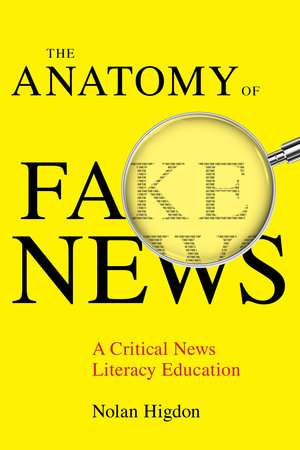For World Press Freedom Day, UC Press celebrates the work of journalists around the world and recognizes the importance of free press principles. The books featured highlight the stories of journalists and the issues facing press freedom today. Learn more about the history of World Press Freedom Day.
The Decisive Network
Magnum Photos and the Postwar Image Market
by Nadya Bair
Since its founding in 1947, the legendary Magnum Photos agency has been telling its own story about photographers who were witnesses to history and artists on the hunt for decisive moments. Based on unprecedented archival research, The Decisive Network unravels Magnum’s mythologies to offer a new history of what it meant to shoot, edit, and sell news images after World War II.
Nadya Bair shows that between the 1940s and 1960s, Magnum expanded the human-interest story to global dimensions while bringing the aesthetic of news pictures into new markets. Working with a vast range of editorial and corporate clients, Magnum made photojournalism integral to postwar visual culture. Bridging art history, media studies, cultural history, and the history of communication, The Decisive Network transforms our understanding of the photographic profession and the global circulation of images in the predigital world.
Prison Truth
The Story of the San Quentin News
by William J. Drummond
San Quentin State Prison, California’s oldest prison and the nation’s largest, is notorious for once holding America’s most dangerous prisoners. But in 2008, the Bastille-by-the-Bay became a beacon for rehabilitation through the prisoner-run newspaper the San Quentin News.
Prison Truth tells the story of how prisoners, many serving life terms, transformed the prison climate from what Johnny Cash called a living hell to an environment that fostered positive change in inmates’ lives. Award-winning journalist William J. Drummond takes us behind bars, introducing us to Arnulfo García, the visionary prisoner who led the revival of the newspaper. Drummond describes how the San Quentin News, after a twenty-year shutdown, was recalled to life under an enlightened warden and the small group of local retired newspaper veterans serving as advisers, which Drummond joined in 2012. Sharing how officials cautiously and often unwittingly allowed the newspaper to tell the stories of the incarcerated, Prison Truth illustrates the power of prison media to humanize the experiences of people inside penitentiary walls and to forge alliances with social justice networks seeking reform.
Eating Mud Crabs in Kandahar
Stories of Food during Wartime by the World’s Leading Correspondents
by Matt McAllester
These sometimes harrowing, frequently funny, and always riveting stories about food and eating under extreme conditions feature the diverse voices of journalists who have reported from dangerous conflict zones around the world during the past twenty years. A profile of the former chef to Kim Jong Il of North Korea describes Kim’s exacting standards for gourmet fare, which he gorges himself on while his country starves. A journalist becomes part of the inner circle of an IRA cell thanks to his drinking buddies. And a young, inexperienced female journalist shares mud crab in a foxhole with an equally young Hamid Karzai. Along with tales of deprivation and repression are stories of generosity and pleasure, sometimes overlapping. This memorable collection, introduced and edited by Matt McAllester, is seasoned by tragedy and violence, spiced with humor and good will, and fortified, in McAllester’s words, with “a little more humanity than we can usually slip into our newspapers and magazine stories.”
Getting It Wrong
Debunking the Greatest Myths in American Journalism
by W. Joseph Campbell
Many of American journalism’s best-known and most cherished stories are exaggerated, dubious, or apocryphal. They are media-driven myths, and they attribute to the news media and their practitioners far more power and influence than they truly exert. In Getting It Wrong, writer and scholar W. Joseph Campbell confronts and dismantles prominent media-driven myths, describing how they can feed stereotypes, distort understanding about the news media, and deflect blame from policymakers. Campbell debunks the notions that the Washington Post’s Watergate reporting brought down Richard M. Nixon’s corrupt presidency, that Walter Cronkite’s characterization of the Vietnam War in 1968 shifted public opinion against the conflict, and that William Randolph Hearst vowed to “furnish the war” against Spain in 1898. This expanded second edition includes a new preface and new chapters about the first Kennedy-Nixon debate in 1960, the haunting Napalm Girl photograph of the Vietnam War, and bogus quotations driven by the Internet and social media.
The Anatomy of Fake News
A Critical News Literacy Education
by Nolan Higdon
The Anatomy of Fake News offers the first historical examination of fake news that takes as its goal the effective teaching of critical news literacy in the United States. Nolan Higdon employs a critical-historical media ecosystems approach to identify the producers, themes, purposes, and influences of fake news. The findings are then incorporated into an invaluable fake news detection kit. This much-needed resource provides a rich history and a promising set of pedagogical strategies for mitigating the pernicious influence of fake new
Is That True?
Critical Thinking for Sociologists
by Joel Best
Across disciplines, critical thinking is praised, taught, and put into practice. But what does it actually mean to think critically? In this brief volume, sociologist Joel Best examines how to evaluate arguments and the evidence used to support them as he hones in on how to think in the field of sociology and beyond. With inimitable style that melds ethnographic verve with dry humor, Best examines the ways in which sociologists engage in fuzzy thinking through bias, faddish cultural waves, spurious reasoning, and implicit bias.





